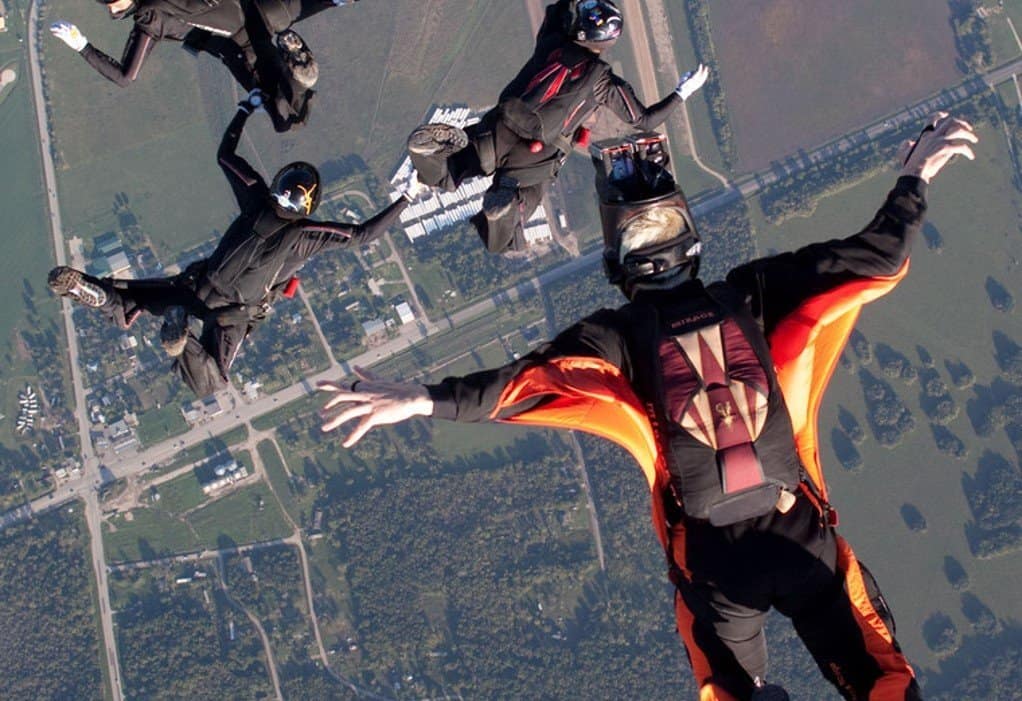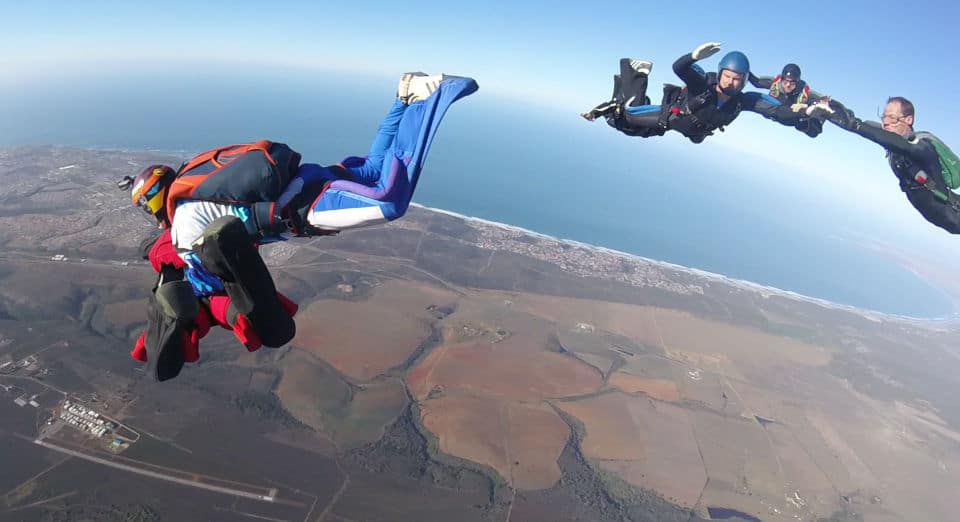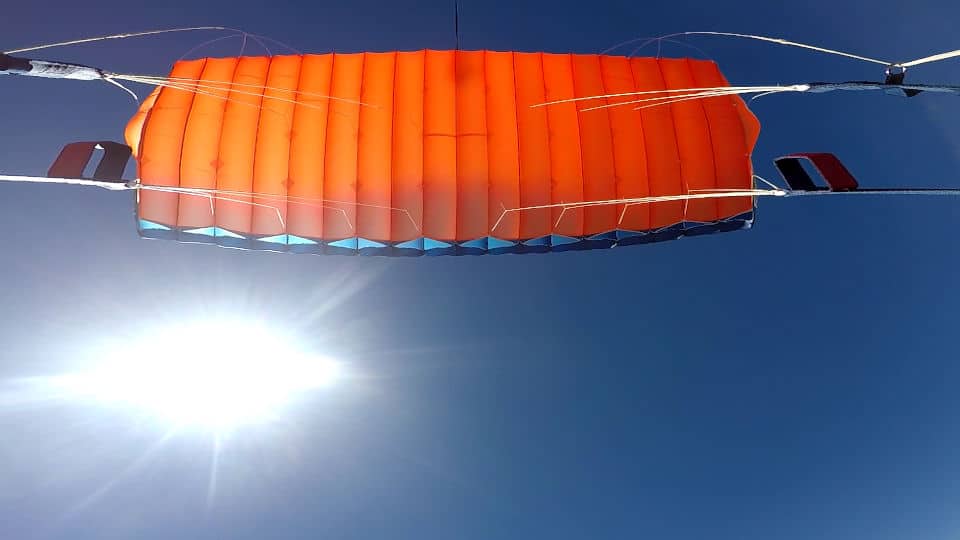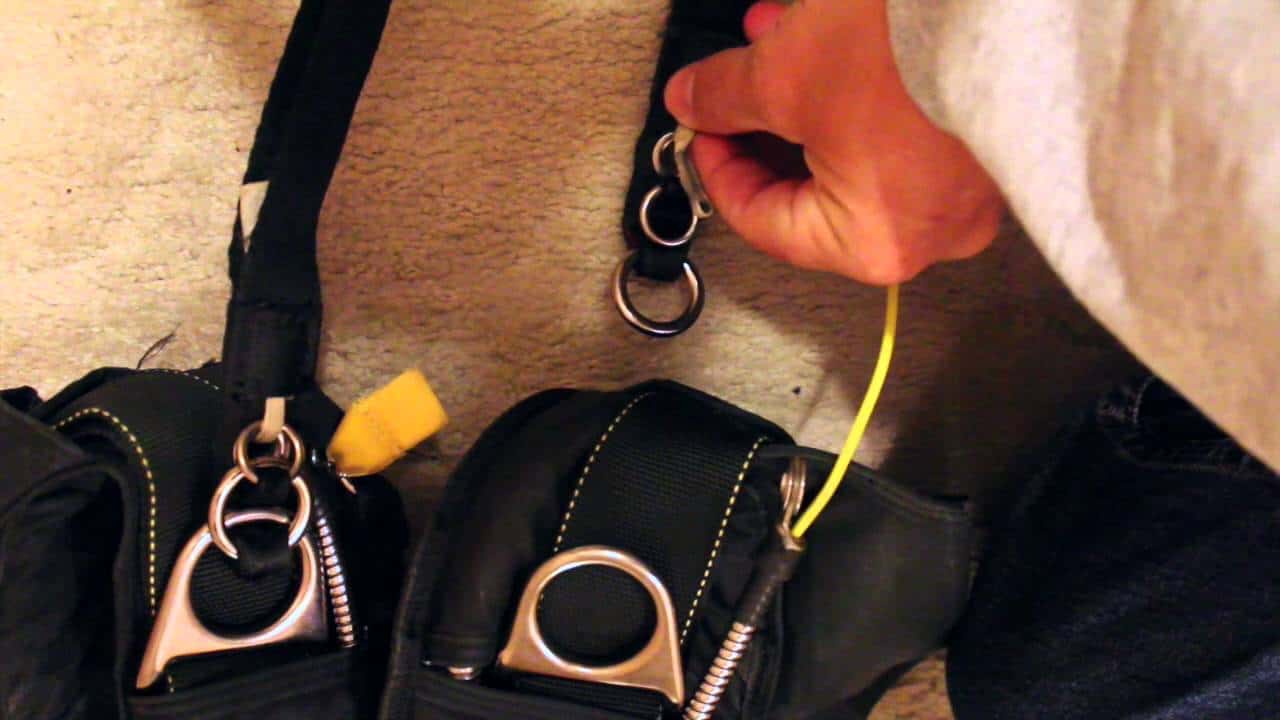Camera Flying 101
18 Sep


Basic Requirements

- CI approved camera helmet for A-License holders
- MUST have an audible + visual altimeter and a hook knife
- Must have a helmet cutaway and be familiar with cutaway procedures
- Read the MOPS (Section 12)
- Get a camera briefing
Safety First
Awareness & Precautions
- Skydive first / camera second
- Secure helmet for takeoff
- Be familiar with the skill level of the jumpers being filmed
Camera
- Is it secure?
- Does it interfere with handles? (remotes, switches & cables)
- Be familiar with camera operation
- Empty mounts covered with tape
Distractions
- Gear check
- Climb out
- Canopy traffic
- Time/Altitude awareness
Canopy
- Bigger is better
- Be careful of hard opening canopies
- Be familiar with your canopy before jumping camera (20 jumps




Basic Camera
- A single camera worn to film from within a skydiving formation or solo.
- Requires a CAT II in FS, AE or SAP (Style, Accuracy & Paraski).
- MUST have signed CI approval.
3rd Eye Camera
- A single camera worn to film from an outside perspective.
- Requires a CAT III in FS or AE to film FS.
- Requires a CAT III in AE to film AE.
- MUST have signed CI approval.


Specialized Camera (AFF and Tandem)
- A camera worn to film AFF or Tandem or if more than 1 camera is worn at any time.
- Requires a CAT III in FS or AE.
- Minimum of 500 formation jumps.
- 100 jumps in the last year.
- OR 100 3rd eye camera jumps, 50 in the last year.
- MUST have signed CI approval AND the approval of the tandem/AFF instructor.
Helmet
- Keep it simple and choose a setup that works for you.
- Does the helmet fit?
- Consider the weight and the impact on your body.
- RSL and Skyhook – yes or no?
- Look for snag hazards and sharp edges.
- Fill in gaps with foam or tape.
- Do ground testing with a suspension line to find hazards
- Secure but can break away.
- Ring sights – experienced camera flyers only. Sticker on goggles great alternative.
- Look at the horizon during deployment to prevent neck injury.
- Bigger canopy is better when starting to fly camera.


Camera Wings
- Get a briefing before using camera wings.
- Deployment considerations.
- Gap between wing and body.
- Collapse both wings.
- Wide arm movement to deployment handle.
- Exaggerate pull motion to clear camera wing burble.
- Should not be restrictive.
- Swoop cords OVER gloves.
- Practice jump without camera recommended.
- Wing attachment point secure.
3rd Eye Camera – Basics
- You are part of the team, dirt dive with your teammates.
- Plan the break off and be aware of the other jumpers on deployment.
- Discuss canopy traffic.
- Dress for success.
- Check your camera settings.
- Practice the climb out and ask other camera flyers for advice on new exits.
- Be careful of flying into the burble of your teammates.
- Consider using 2 cameras for competition.


3rd Eye Camera – Tips and tricks
- Make sure the formation fills the screen.
- Choose a neutral background.
- Pick a heading and maintain proximity.
- Be in position to capture all the grips.
- Always keep formation in frame.
- You should be able to check your alti without missing the shot
- Set camera view angle according to the formation size.
- Always carry spare memory cards.
Emergency Procedures
- Attempt to clear an entanglement ONCE, if unsuccessful cut away helmet.
- If main deploys, check canopy.
- If main canopy malfunctions initiate emergency procedures.
- If landing into water cut away helmet, it can become entangled in the gear.
- ARCH, CHECK HANDLES AND CAMERAS CLEAR, CUTAWAY. CHECK CAMERA HELMET IS CLEAR OF MAIN CANOPY. IF CLEAR – GET STABLE (time permitting) AND DEPLOY RESERVE. IF NOT CLEAR – JETTISON HELMET, GET STABLE (time permitting) AND DEPLOY RESERVE.

Remember, flying camera takes practice, don’t expect to be an expert on your first jump. The trick is to practice. If you have any questions, find an experienced camera flyer and ask the next time you’re at the dropzone.





